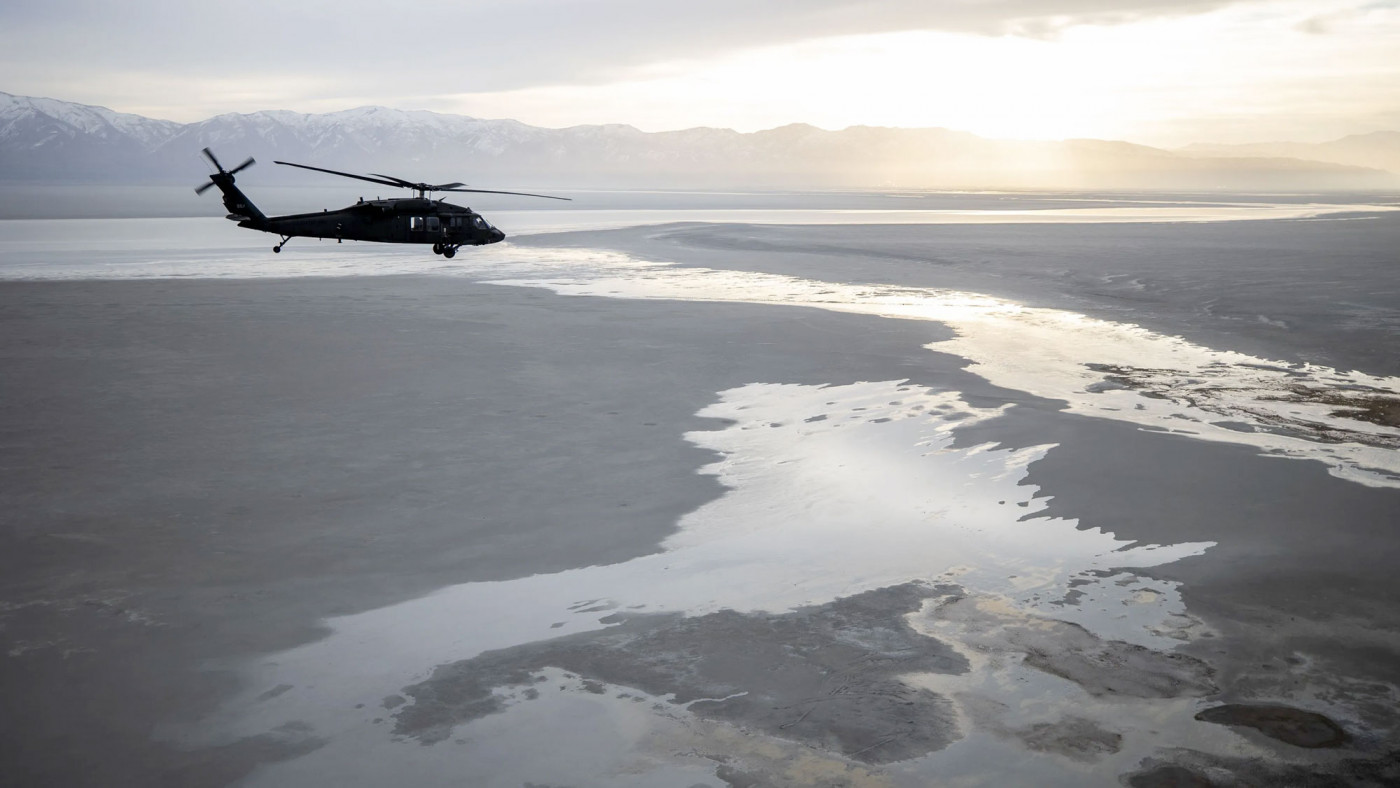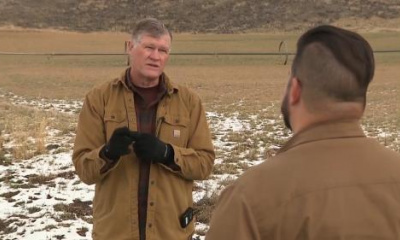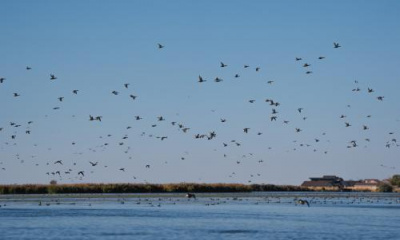Blackhawk tour highlights ‘shocking’ condition of lake
A group of Utah legislators flew over the shrinking Great Salt Lake early Tuesday morning to see just how badly it is diminishing due to drought and diversions.
“It really hit home how bad it is,” said Rep. Stephen Handy, R-Layton. “The shrinking Great Salt Lake is much worse than I thought it was. On the east side, there simply is no lake.”
Sen. Kathleen Riebe, D-Cottonwood Heights, said it’s one thing to see the lake from the shoreline and quite another to view it from a helicopter.
“We flew across the lake, but you could almost walk across the lake,” she said. “It was super scary to see the impacts to wildlife such as the migratory birds.”
About 50 lawmakers were hosted by a trio of Utah Army National Guard Blackhawk helicopters in multiple shifts to see the dwindling lake, which reached its lowest recorded level in October last year.
Another 50 lawmakers will take the helicopter trips later this week in aerial tours that support the Utah Army National Guard’s training missions.
The trips grew out of an idea by Rep. Doug Owens, D-Millcreek, and was supported by legislative leadership.
“The view is stunning. You could see the marinas that are high and dry, you could see the exposed lake bed,” he said. “It is shocking. Antelope Island has turned into part of the mainland.”
Like Riebe, Owens pointed out the ecological importance of the Great Salt Lake, its role in supporting multiple industries and the air quality threats posed by the lake bed.
“We don’t want that dry lake bed blowing dust onto the Wasatch Front,” he said.
The lake’s levels have been challenged by both drought and diversions.
A report released Monday said Utah, the rest of the West and northern Mexico have experienced the driest conditions in 12 centuries, based on tree-ring research.
The drought is spurring a number of water saving proposals at the Utah Legislature, including an ambitious move to meter secondary water and the creation of a conservation plan for the Great Salt Lake.
“I hope people understand the urgency of the situation,” Owens said. “It is nothing short of an emergency that we make sure we conserve that incredible place, not only for air quality, industry, and ecology, but it is part of our identity as a state.”








